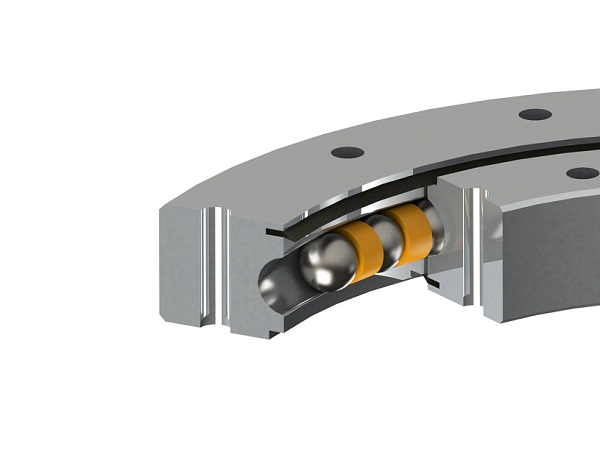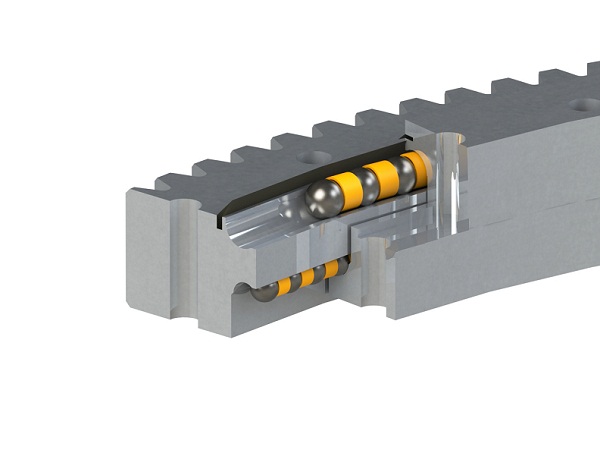What are the classifications of slewing bearings? How to choose a model?
There are many classifications of slewing bearings, each type has different characteristics, and the scenarios used are also different. You may not be very clear about the selection type. Generally, the selection type should be considered: slewing accuracy, bearing capacity, working temperature, In terms of running speed, etc., let’s take a look at the specific method with the slewing bearing manufacturer~
Classification of slewing bearings

1. Three-row combined roller slewing bearing
The three-row roller slewing bearing has the upper and lower and radial raceways of the three races separated, so that the load of each row of rollers can be accurately determined. It can bear various loads at the same time, has a firm structure, and has large shaft and radial dimensions. It is suitable for heavy machinery requiring large diameters.
2. Double row angular contact ball slewing bearing
The double-row ball slewing bearing has three races, and the steel balls and spacers can be directly discharged into the upper and lower raceways. According to the stress conditions, two rows of steel balls with different diameters are arranged. The axial and radial dimensions of the double-row ball slewing bearing are relatively large, and the structure is firm, especially suitable for machinery that requires a medium or larger diameter.
3. Single row cross roller slewing bearing
The single-row cross-roller slewing bearing is composed of two races, with compact structure, high manufacturing precision, light weight, small assembly clearance, and can bear axial force, large radial force and tipping moment at the same time.
4. Single row four-point contact ball slewing bearing
The single-row four-point contact ball bearing slewing bearing is composed of two races, with compact structure, light weight, four-point contact between the steel ball and the arc raceway, and can bear axial force, radial force and tipping moment at the same time.
Factors to consider when choosing a slewing ring bearing type

1. Carrying capacity
The bearing capacity is one of the factors that determines the size of the bearing. In general, the four-point contact ball slewing bearing can withstand heavier radial loads, so it may be more suitable for the occasions where the heavier load and the size and direction of the load may change The four-point contact is a slewing bearing.
2. Rotation accuracy
If the bearing positioning capability is required to be high, the crossed roller slewing bearing can be selected.
3. Working temperature
In general, the operating temperature of the slewing ring bearing mainly depends on the sealing material, grease, isolation block, and the operating temperature range is -25 to +70 °C.
4. Running speed
The four-point contact ball slewing ring bearing has a high limit speed, and the friction force generated is smaller than that of the cylindrical roller slewing ring.
5. Sealing conditions
Qualified seals used in slewing bearings can provide good moisture and pollution protection, and ensure sufficient quality in the bearing, which can prolong the service life of the bearing, so the seal is very important for the performance of the slewing bearing.
6. Vibration
For vibration applications, both four-point contact ball slewing rings and crossed cylindrical roller slewing rings are suitable.
The above article describes the classification of slewing ring bearings in detail, and the factors that need to be considered when choosing the type. I hope it can help you. If you have other questions about slewing ring bearings, you can leave us a message~


